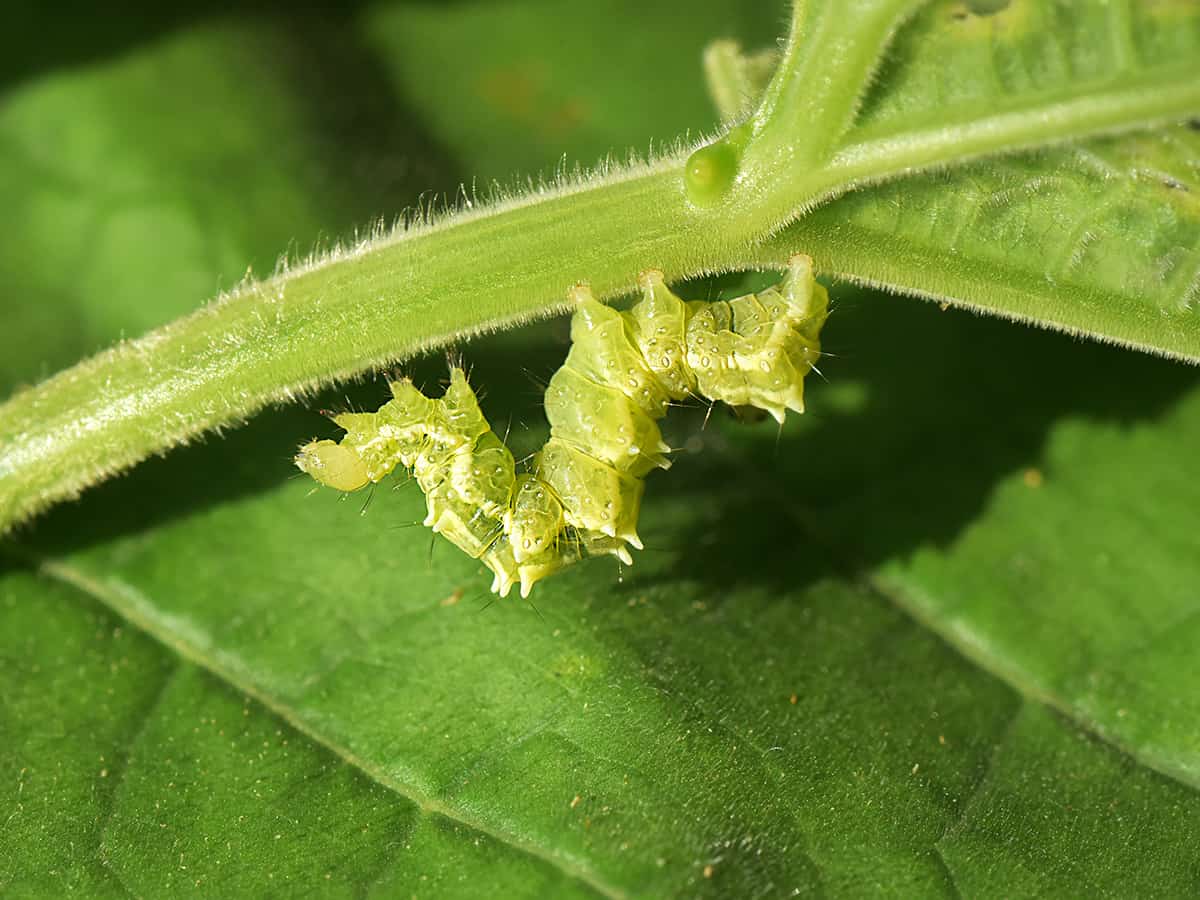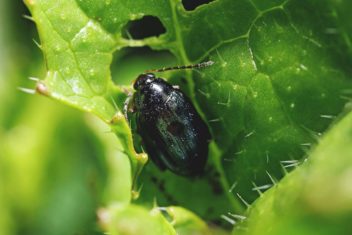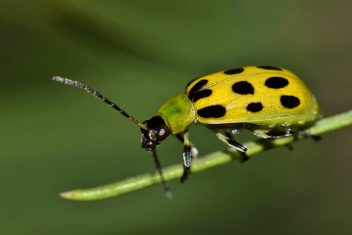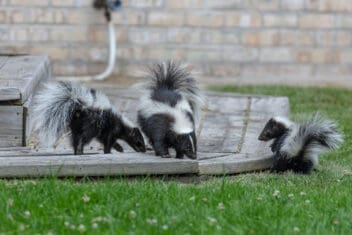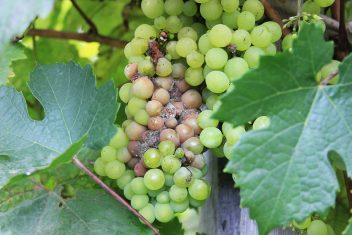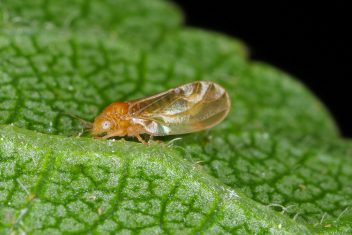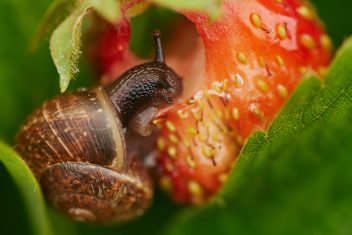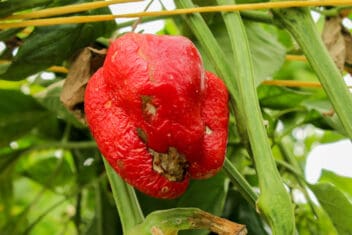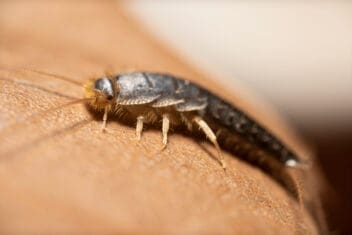Whether you’re new to gardening or a seasoned enthusiast, you’re probably familiar with one super common insect pest: the dreaded cabbage looper.
They’re not dangerous, but they are voracious. They love most plants in your vegetable garden, especially leafy greens. They’ll devour your hard work and damage your plants.
Want to know how to spot them and get rid of them? This guide will help.
What Are Cabbage Loopers?
Cabbage loopers are common throughout the world, and although they damage a lot of plants, they don’t ruin crops entirely. They will affect the amount of your harvest, however.
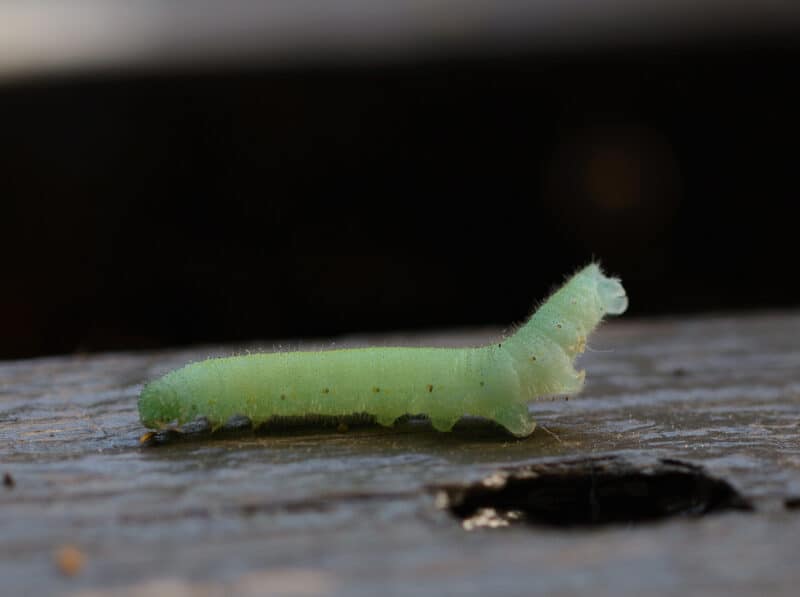

Cabbage loopers (Trichoplusia ni) are sometimes known as inchworms because they move in a distinctive way of pushing one end of their body toward the other in a looping motion, inching along as they go.
You’ll most likely notice them in their larva stage when they’re an inch-long green caterpillar. They can eat up to three times their body weight in a single day, and where there’s one, there are always a lot more.
They’re an off-white moth with a ‘Y’ shape or small black dots on each wing in their adult stage. They flit from one plant to another, laying eggs, which you can see as little white dots on the undersides of foliage.
In a bad season, on hot summer days will see multiple moths hard at work in your vegetable garden, lawn, and orchard.
Plants Frequently Eaten by Cabbage Looper
Cabbage loopers love cruciferous plants so much that some gardeners limit these plants in their gardens to avoid this common pest.
They also love plants not in the cruciferous family, though, so don’t get comfortable just because you don’t have any broccoli, cabbage, or cauliflower in your veggie patch.
The plants they love include:
Identifying Cabbage Loopers and Their Damage
These pests are pretty easy to identify. They’re light green in color and have a series of thin white lines or dots on their body. But other caterpillars can look like this, too.
You can be sure you have them if the caterpillars move along in their distinctive motion of looping their bodies along the plant.
Cabbage loopers feed on the undersides of foliage and you will often see irregular holes covering young and developing leaves.
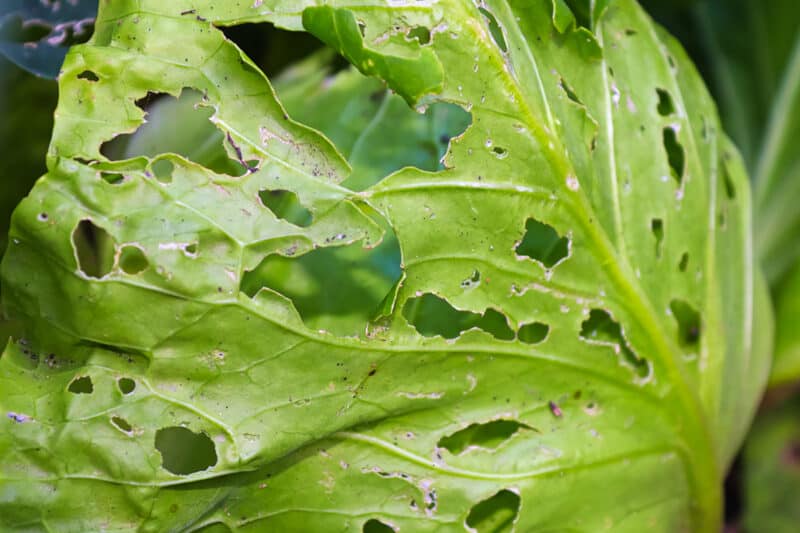

Sometimes you will see little piles of green and brown pellets where their excrement builds up, but this is harder to spot than the other more obvious signs.
The heads of cabbage and cauliflower will generally be stunted in growth when attacked by cabbage loopers.
Life Cycle of Cabbage Loopers
Understanding the life cycle of garden pests like cabbage loopers helps you to interrupt their activity in your vegetable patch.


The moths emerge in the spring after overwintering in a cocoon. In hot areas, you may only see them active at night. In warm areas, they often are busy during the day as well.
The moths lay tiny yellowish or white eggs on the undersides of leaves and foliage. They’re easily seen by the naked eye.
The eggs hatch in about four days before the larvae (or caterpillar) becomes fully grown in about four weeks. This is their destructive stage where they eat three times their body weight daily. The last week is their most active eating stage.
The caterpillar pupates in white silk cocoons on the undersides of leaves, emerging as a moth in about 10 days.
You may see several generations of cabbage loopers in one growing season if you don’t disrupt them.
How to Prevent and Control Cabbage Loopers


Preventing cabbage loopers before they get too large in numbers is key. They’re so common that it’s unlikely you’ll eradicate them completely, so aim for keeping their population as low as possible.
Many gardeners will tolerate the first generation of cabbage loopers and the minor damage they cause. But as more and more appear, you’ll find you have to act to avoid the decimation of many of your food crops.
If you have time, keep an eye on your cruciferous plants and hand-pick them off. This method requires you to pay attention and remove the caterpillars as soon as you see them. You also need to brush the eggs off to prevent hatching.
If you prefer natural methods over chemical ones, encourage birds into your garden. They love the fat, juicy cabbage loopers.
Encourage insects that enjoy dining on cabbage loopers. Ladybugs are particularly efficient at this. Also encourage lacewings, spiders, and wasps. Lizards and toads will also munch on loopers.
Utilize pheromone traps to help you know when the moths begin to get active. There are various styles available, so talk to your local garden center and get advice on what works best in your area.
Use floating row covers. They are the gold standard for protecting plants in areas where loopers are common. They prevent the moths from laying their eggs on the foliage in the first place, so long as you get them in place when you plant and seal the bottoms.
There are soil bacteria that are effective against cabbage loopers so consider these as part of your weaponry. Bacillus thuringiensis is available in most areas and can be sprayed early in the season or when you start to see the initial signs.
My favorite method is regular sprays of neem oil. It’s an organic approach that works on many other plants as well. Neem oil is more of a long-term method, not an instant knockdown.
Pyrethrum can be added to neem oil for that initial hit to rid your garden of cabbage loopers or slow them down.
Companion Planting
Like all insects, cabbage loopers are repelled by some plants. I’ve had success with using plants as natural repellents, and it sure beats using chemicals. There haven’t been extensive studies proving any of these plants are effective, but that doesn’t mean they aren’t worth a try.
Grow these plants in amongst your cruciferous veggies to deter loopers:
Make sure you rotate the plants that you’re using as a natural repellant. The more places you sow them, the better they work.
Till the Soil
Always till the soil well between plantings. You need to use every opportunity to disrupt the life cycle of cabbage looper.
Tilling the soil disturbs any eggs or pupa.
Remove Debris
Once again, any disruption to the life cycle is an efficient way to control cabbage looper, and the removal of garden debris contributes to this.
Often pupa will overwinter in garden debris, so removing it breaks that link.
The cabbage looper’s end pupal stage is when they form a silky white cocoon on the undersides of leaves, or anywhere else they feel sheltered.
If you remove their ability to pupate as much as possible, you severely limit their overall numbers.
Make Your Own Homemade Spray
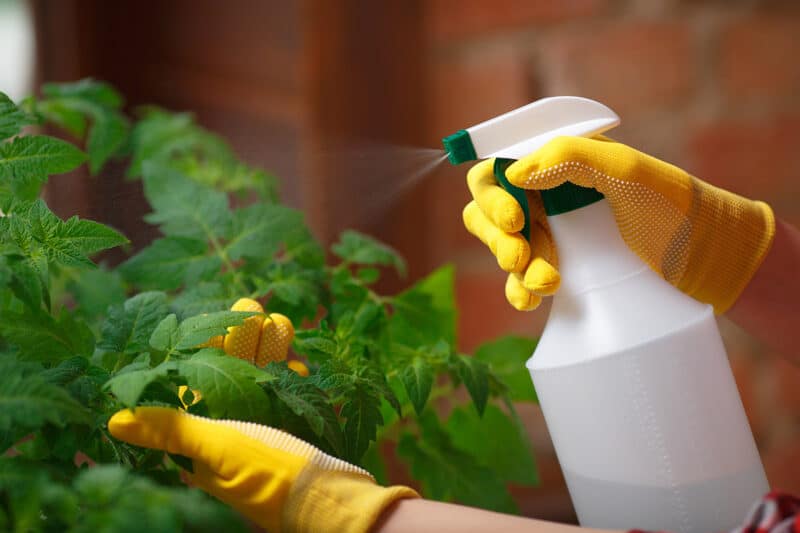

Try making some garlic and mint into a homemade insecticide spray. This spray goes a long way to controlling the cabbage looper population. It’s natural and super-easy to make.
- Two heads of garlic (each clove separated and peeled)
- 3 to 3 1/2 cups of mint leaves
- 12 cups of water
- 2 teaspoons of cayenne pepper
- 2 squirts of biodegradable dishwashing liquid
Add all the ingredients into a food processor and pulse until the solid pieces become small.
Add to a pot and heat to simmer point. Leave to cool overnight to allow the mixture to steep.
In the morning, strain into a spray bottle and spray your plants. This can be used whether you know you have cabbage loopers or not. It makes them move on to other gardens, and it stops them from establishing themselves.
How to Control a Severe Infestation
Sometimes cabbage loopers will sneak up on you, and before you know it, they’re everywhere.
It takes a combined and sustained effort using most of the techniques described in this article to combat them. Try a combination of the following for a severe infestation:
Pyrethrin
If you do use commercial sprays, I find organic pyrethrin works well. It’s a knockdown spray that works right away because you don’t have to wait to disrupt the insect’s lifecycle.
Diatomaceous Earth
This can work well if you can manage to keep it on and around the plants, but remember that you have to reapply if it rains or if you water from overhead.
If DT isn’t something you already use for other garden applications, add it as one of the weapons against cabbage loopers.
Neem Oil
As I’ve already mentioned, neem oil is one of my favorite sprays to use in the garden. It’s natural, safe, and is in many products we use, from shampoo to toothpaste.
Neem oil disrupts the lifecycle of many garden pests and even helps prevent disease, bacteria, and many other plant issues.
It is bee-friendly, but I still advise using it in the early evening or dusk when the bees have gone to bed for the night.
Row Covers
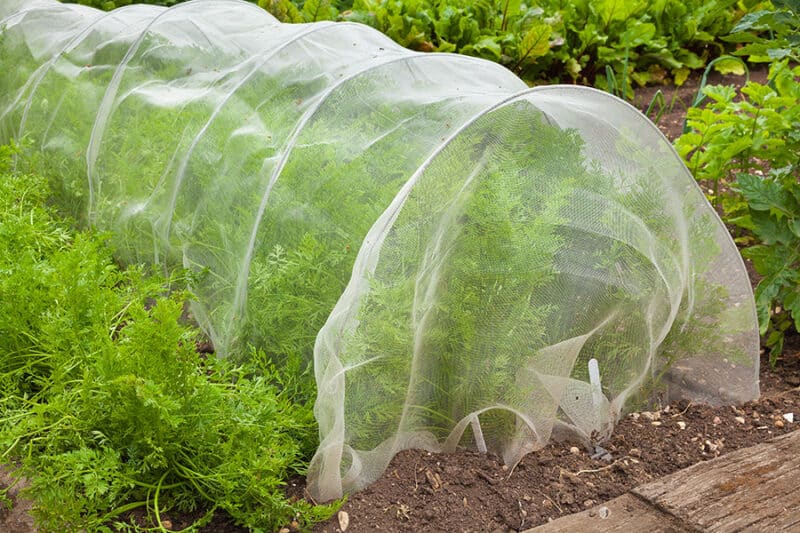

If the moths can’t get to your plants, they can’t lay eggs that will turn into caterpillars that will eventually munch on your veggies. Row covers won’t negatively impact the garden and are effective when used the right way.
The Lowdown on Cabbage Loopers
If you’re like me and prefer a natural and chemical-free garden, you have to accept a little insect damage.
The problem with cabbage loopers is if you don’t address the problem, it grows exponentially every day, and before you know it, they’re eating everything in your garden that you hoped to eat.
The moths become prolific and lay their eggs everywhere and the caterpillars take over.
As soon as you see the eggs on the undersides of the leaves, you must take action.
